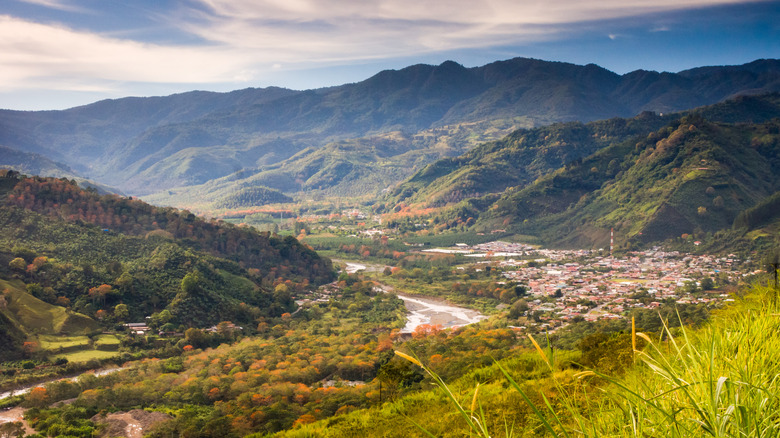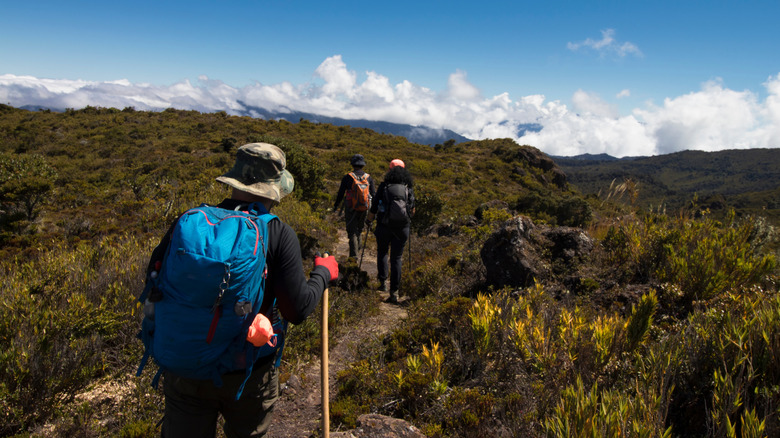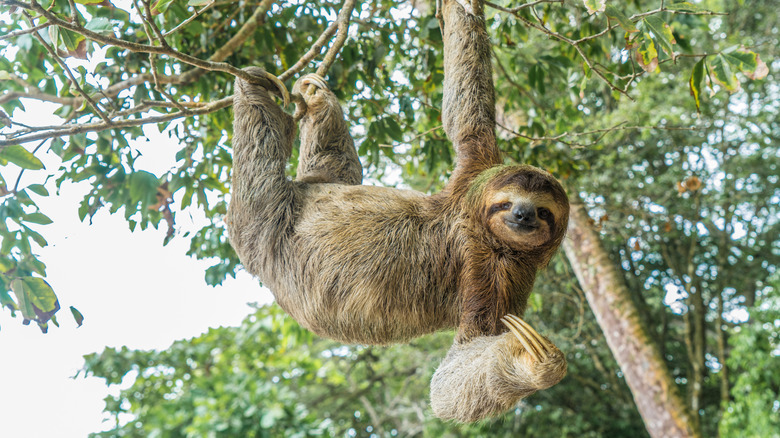Ever feel like you need to go on a long walk to clear your mind? How about a really long walk from the Caribbean Sea to the Pacific Coast? Travelers are doing just that on the 174-mile country-crossing trail known as the El Camino de Costa Rica. Inspired by the original historic Camino de Santiago hike in Spain, which has a nearly thousand-year-old history, El Camino de Costa Rica is much newer, inaugurated as recently as 2018, built with the purpose of promoting sustainable tourism.
The ambitious sea-to-sea journey takes travelers at least two weeks to complete as they trek through dreamy cloud forests, visit coffee plantations, stop to swim in wild waterfalls, and camp in small communities along the way, covering between three to 12 miles per day. While Costa Rica is home to many gorgeous national parks, this route takes you through Barbilla National Park, which also protects indigenous territory, and ends in Quepos near the small but mighty Manuel Antonio National Park.
As one of the longest trails in Central America, El Camino de Costa Rica offers an adventure of epic proportions for a thorough experience that lets you experience an authentic picture of Costa Rican culture and biodiversity. Here’s everything you need to know if you’re considering taking your first steps on the Central American Camino.
How long does it take to walk El Camino de Costa Rica?
El Camino de Costa Rica is 174 miles long, and if you were to do the whole thing, it would take you about 15 days if you are covering an average of 12 miles per day. Many tour companies offer packages with guides that will stay with you all along the trail like Much Better Adventures, which offers a nine-day tour that includes transfers, hotels on the first and last night, camping gear, and meals for $2,493 per person. For a slower-paced, 16-day trip, other tour operators like Urritrek have programs that start at $2,615 per person (depending on the size of the final group).
The trail was created by the non-profit association for rural development Mar a Mar, which aims to bring tourism into the lesser-known parts of Costa Rica and revitalize the interior villages on the trail. Along the way, you can stay at small inns and partake in adventure activities like rafting and horseback riding in La Suiza or camp overnight in the indigenous territory of Valle Escondido. If that sounds tiring, just think about all the wonderful coffee you can taste as you hike past the region’s bean-growing valleys and spend the night at coffee plantation accommodations like Finca Tres Equis.




